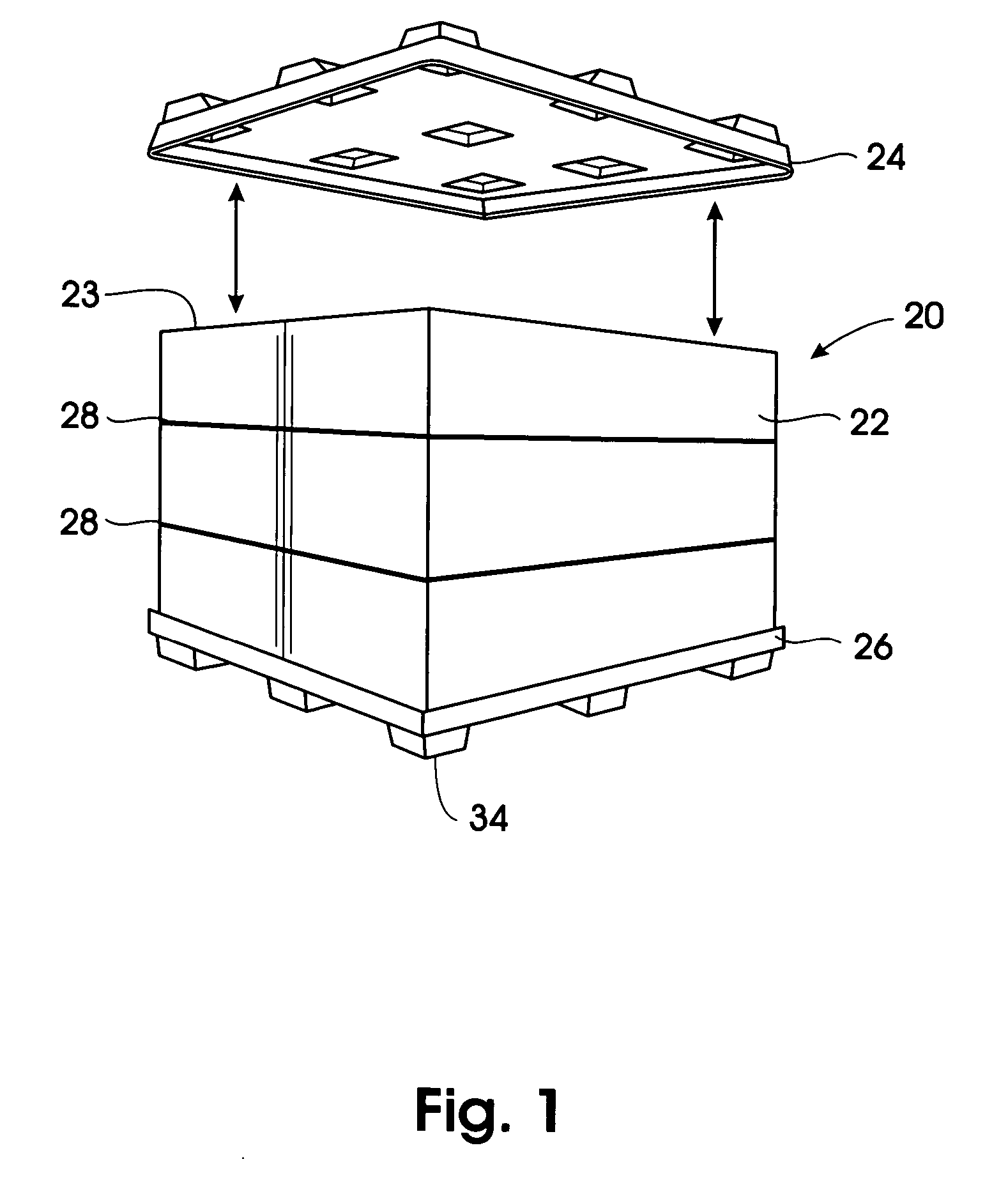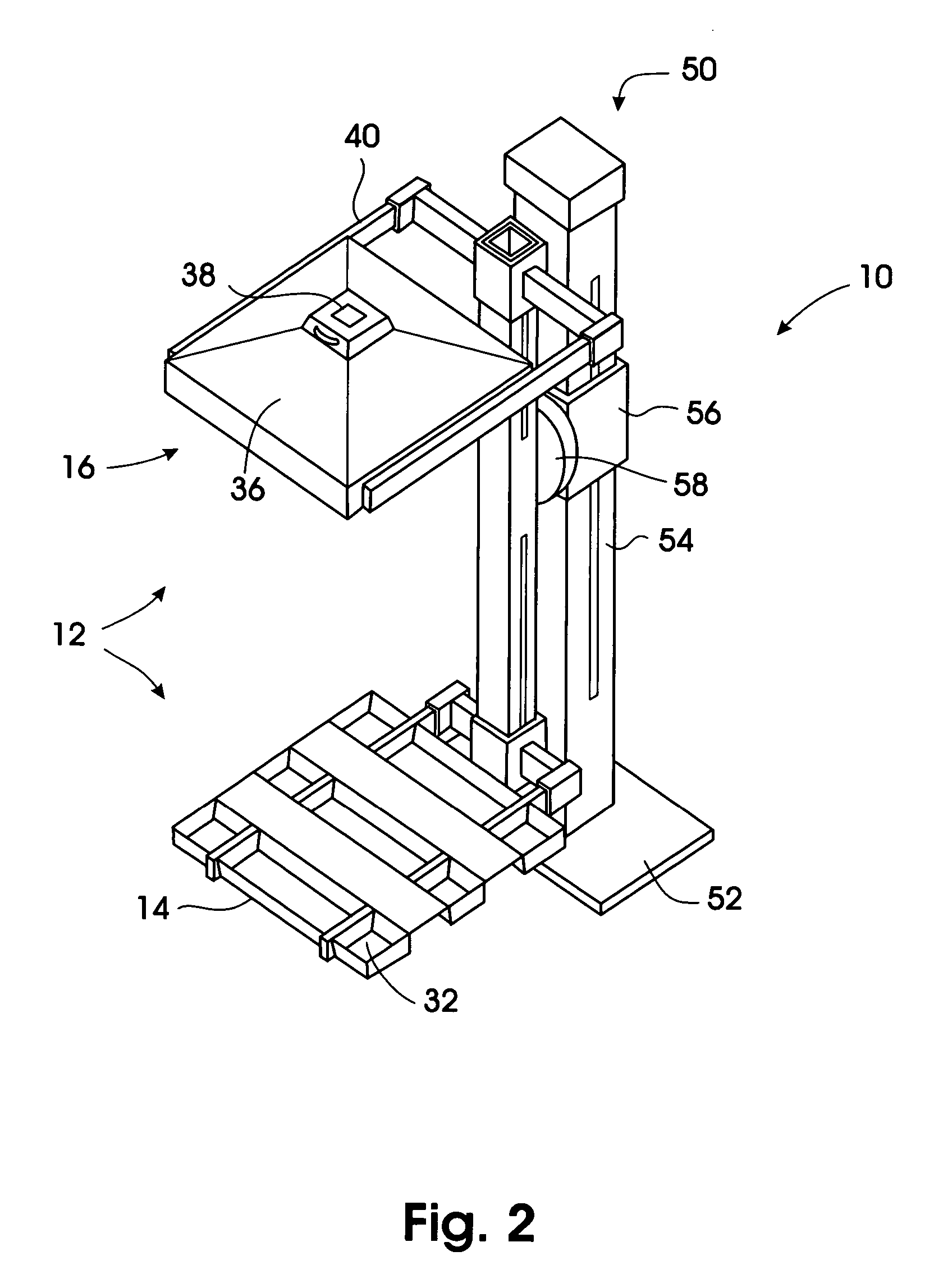Dispensing system for returnable bulk containers
a technology for shipping containers and dispensing systems, which is applied in the direction of opening closed containers, domestic articles, liquid/fluent solid measurements, etc., can solve the problems of not allowing direct flow control of materials, dust or residue generated by bulk material movement, and devices adding to the complexity and cost of containers, so as to achieve volume efficiency and cost. the effect of more cos
- Summary
- Abstract
- Description
- Claims
- Application Information
AI Technical Summary
Benefits of technology
Problems solved by technology
Method used
Image
Examples
Embodiment Construction
[0039] Referring to FIG. 1, the exemplary container / pack 20 in this case consists of a one-piece, tube-shaped, foldable sleeve 22 adapted to be positioned within a pair of thermoformed pallets 24,26 which form the top and bottom, respectively, of the container 20. The container may be double-banded with bands 28 for added strength during handling and transit. Typically, such containers have a footprint of 39×48″; 45×48″; or 48×48″ OD, a sleeve height of 45″ and, when loaded, can weigh upwards of 500 lbs.
[0040] The dispensing system 10 is shown in FIG. 2. At the heart of the dispensing system 10 is the container press 12 which comprises a lower platen 14 and an upper hopper cap 16 movable relative toward and away from one another. While the lower platen 14 may be flat, it is preferably configured to accept and accommodate (stack with) the entire range of incoming pallet configurations. For example, the platen 14 shown in FIG. 2 is provided with wells 32 which accommodate feet 34 of ...
PUM
 Login to View More
Login to View More Abstract
Description
Claims
Application Information
 Login to View More
Login to View More - R&D
- Intellectual Property
- Life Sciences
- Materials
- Tech Scout
- Unparalleled Data Quality
- Higher Quality Content
- 60% Fewer Hallucinations
Browse by: Latest US Patents, China's latest patents, Technical Efficacy Thesaurus, Application Domain, Technology Topic, Popular Technical Reports.
© 2025 PatSnap. All rights reserved.Legal|Privacy policy|Modern Slavery Act Transparency Statement|Sitemap|About US| Contact US: help@patsnap.com



